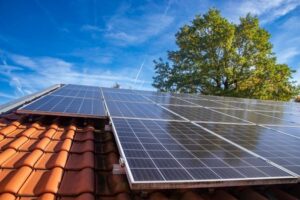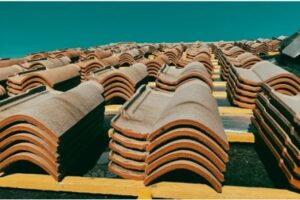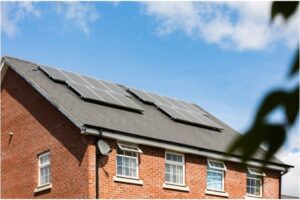Siding is more than just an exterior coat for your home; it’s a shield against the elements, a statement of style, and a key player in your property’s energy efficiency. In regions with diverse weather patterns, akin to those experienced in and around cities like Pittsburgh, the importance of siding maintenance becomes even more pronounced. Fluctuating temperatures, humidity, and harsh weather conditions can take a toll on siding materials. This article explores essential maintenance tips that ensure your siding not only looks great but also stands the test of time.

Table of Contents
1. Regular Cleaning
The first step in siding maintenance is as simple as it is important: regular cleaning. Over time, dirt, grime, and pollutants can accumulate on your siding, leading to discoloration and potential damage. For vinyl siding, a gentle wash with a soft brush and mild detergent is usually sufficient. If you have wood siding, be mindful of the cleaning agents used to avoid damaging the material. Regular cleaning not only keeps your siding looking new but also provides an opportunity to inspect for any hidden damage.
2. Prompt Repairs of Damage
Addressing damage promptly is essential in maintaining the integrity of your siding. Whether it’s a small crack or a loose panel, minor issues can quickly escalate into major problems if left unattended. After events like severe storms, a thorough inspection is advisable. In some cases, seeking expertise from a reputable Pittsburgh siding company or a similar professional service can be beneficial to assess and repair any significant damage, ensuring that your siding continues to protect your home effectively.
3. Mold and Mildew Prevention
Mold and mildew not only tarnish the appearance of your siding but can also lead to structural damage over time. Preventing their growth is key, especially in areas prone to high humidity. Ensuring good air circulation around your home is vital. Trim any overhanging branches or shrubs that may prevent sunlight from reaching the siding. Additionally, consider using mold-resistant products or treatments, particularly in areas that receive less sunlight and are more susceptible to moisture.
4. Protection Against Pests
Siding can be vulnerable to pest infestations, which can cause significant damage if not addressed. Keep an eye out for signs of termites, carpenter ants, or rodents are crucial. Pay special attention to any gaps or holes that could serve as entry points for pests. Sealing these promptly and keeping the area around your home clear of debris can go a long way in deterring these unwelcome visitors. In some cases, professional pest control services may be required to address more severe infestations.
5. Regular Painting and Staining
For certain types of siding, such as wood, regular painting or staining is necessary not just for aesthetic reasons but also to provide a protective layer against the elements. This barrier helps to prevent moisture penetration and sun damage, both of which can lead to deterioration over time. The frequency of repainting or restaining depends on various factors, including the type of material, the quality of previous applications, and exposure to harsh weather conditions. Choosing high-quality paints or stains can also extend the life of your siding significantly.
6. Weatherproofing Measures
Weatherproofing your siding is a proactive step in safeguarding it against the varying weather conditions it faces year-round. Applying a weather-resistant sealant is key, especially for wood and certain types of composite siding. These sealants not only protect against moisture penetration but also help in resisting the damaging effects of UV rays. Additionally, ensuring that your siding has proper flashing and caulking around windows, doors, and corners can prevent water infiltration, a common cause of siding damage.
7. Ensuring Proper Installation
While not a maintenance tip per se, the initial proper installation of siding is fundamental to its longevity. Incorrectly installed siding can lead to a host of problems, from moisture issues to increased susceptibility to wind damage. If you’re installing new siding or replacing old siding, it’s worth investing in professional installation services. Experienced contractors, like those from a reputable Pittsburgh Siding Company, can guarantee that your siding is installed according to the best practices, which is a critical factor in ensuring its durability.
8. Checking for Water Damage
Water damage can be a silent killer for siding. Make sure to conduct regular inspections, especially after heavy rain or snow, to identify and address any water-related issues. Look for signs of rot or warping in wood siding, bulging or cracking in vinyl, and rust or discoloration in metal siding. Pay special attention to areas around gutters and downspouts, as clogged or malfunctioning gutters can often lead to water damage on nearby siding.
9. Avoiding Harmful Chemicals
In your efforts to keep siding clean and well-maintained, it’s important to steer clear of harsh chemicals and abrasive cleaning methods. These can strip away protective coatings or even degrade the siding material itself. For instance, using a pressure washer on high settings can damage vinyl or wood siding. Opt for gentler cleaning methods and use cleaning solutions that are specifically designed for your type of siding. This approach not only cleans effectively but also preserves the integrity of the siding.
10. Seasonal Maintenance Routines
Different seasons bring different challenges for siding maintenance. In spring and summer, focus on cleaning and checking for pest damage. Fall is an ideal time to prepare your siding for the colder months ahead by inspecting and repairing any damage and ensuring that your home is properly insulated. Winter calls for vigilance against ice and snow build-up, which can cause structural damage if ignored. Adapting your maintenance routines to the changing seasons will help keep your siding in top condition year-round.
Conclusion
Maintaining your home’s siding is not just about preserving its visual appeal; it’s a vital part of protecting your home’s structural integrity and ensuring its longevity. By following these ten maintenance tips, homeowners can avoid costly repairs and replacements, while keeping their homes looking beautiful and well-kept. Regular cleaning, prompt repairs, and seasonal maintenance are key, but it’s also important to pay attention to the finer details, such as weatherproofing and avoiding harmful chemicals.
While some maintenance tasks can be DIY, others may require the expertise of professionals, especially for significant repairs or installations. Investing time and effort into maintaining your siding pays off in the long run, both in terms of your home’s appearance and its value. With these tips in hand, your siding will not only withstand the test of time but also continue to be a source of pride and comfort in your home.




